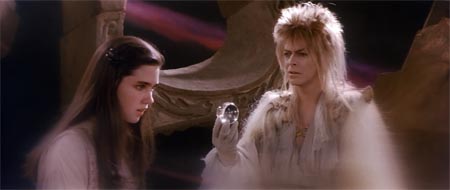Das Singende, Klingende Bäumchen
“The following program will terrify anyone who remembers how BBC Children’s TV decided bizarre East German fairy tales were good for us. But everyone else needs to know why so many are still suffering the consequences.”–2002 BBC Radio broadcast reminiscing about The Singing Ringing Tree

DIRECTED BY: Francesco Stefani
FEATURING: Christel Bodenstein, Eckart Dux, Richard Krüger, Charles Hans Vogt
PLOT: A handsome prince journeys to a foreign kingdom to seek the hand of an arrogant princess, but she refuses his gift and demands he bring her the legendary singing ringing tree instead. The prince discovers the tree in a magical kingdom ruled over by a mischievous dwarf, who tells him he can have the tree, but it will not sing until the princess loves him. Later, an unwise wish turns the prince into a bear, and he abducts the princess and takes her to live with him.

BACKGROUND:
- Film adaptations of old folktales were a popular genre in Warsaw Pact countries during the Cold War, but the genre was seldom attempted in the West, excepting Disney-style animated films that smoothed out the rough edges of the stories. In East Germany these movies were collectively known as “Märchenfilme.”
- The Singing Ringing Tree is clearly in the Brothers’ Grimm style but is not based on a single source. The title is similar to a Grimm tale translated as “The Singing, Springing Lark.”
- The colorful, artificial storybook look crafted by art director Erich Zander is a huge part of the film’s success. Zander began his career working as a co-art director with Paul Leni in the early 1920s, before the Expressionist titan became a director and emigrated to Hollywood.
- Das Singende, Klingende Bäumchen was the 11th highest grossing film ever made in East Germany.
- The Singing Ringing Tree achieved international prominence when it was broadcast by the BBC in 1964 with English language voiceover narration as an installment in the series “Tales from Europe.” It became a staple of British children’s programming and was screened as late as the 1990s. The broadcasts were so memorably strange and scarring they were parodied four decades later by “The Fast Show” as “Ton Swingingen Ringingen Bingingen Plingingen Tingingen Plinkingen Plonkingen Boingingen Tree.”
- A sound sculpture erected by architects Mike Tonkin and Anna Liu in Burnley, Lancashire, England in 2006 is named “The Singing Ringing Tree” in tribute to this movie.
INDELIBLE IMAGE: The Singing Ringing Tree offers brilliantly hued proto-psychedelic sets, a despondent prince trapped in a darling fuzzy bear suit, and an evil dwarf with arched eyebrows prancing through a magical Expressionist kingdom, but the unforgettable image has to be the giant mechanical goldfish. A half-functioning robot made out of wire and paper mâché, the goldfish looks like God’s rejected first draft of a sea monster. Eerily, only three parts of him move—his lips, his eyes, and his tail—yet, despite the fact that he was obviously birthed from a nightmare, the Princess finds him to be an adorable companion.
WHAT MAKES IT WEIRD: The authentically semi-coherent fairy tale plotting, combined with art direction that’s simultaneously lush and cheesy, create a world that’s defiantly different than the one we know. It’s a rose-colored, romanticized view of the Dark Ages glimpsed through a hole in the Iron Curtain. The Singing Ringing Tree is known in former East Germany (where it was a blockbuster hit in the 1950s) and Britain (where it became a cult item through TV screenings in the 1960s), but this spectacular curiosity still needs to be brought to the attention of the rest of the world.
Clip from The Singing Ringing Tree
COMMENTS: With its obscure Teutonic magic, its timeless kingdoms and mysterious faerie folk, its poetic transformations of princes into bears Continue reading 155. THE SINGING RINGING TREE (1957)




